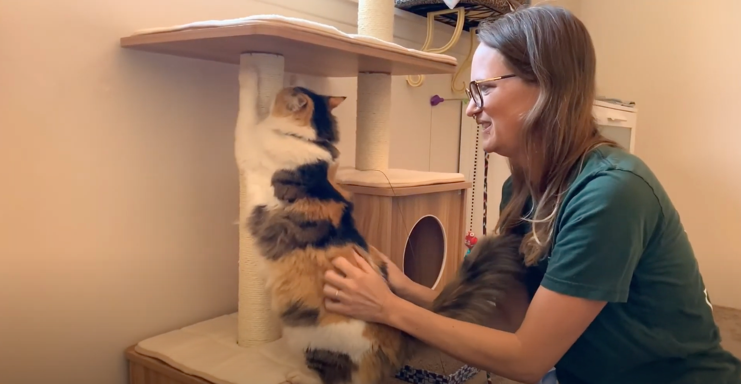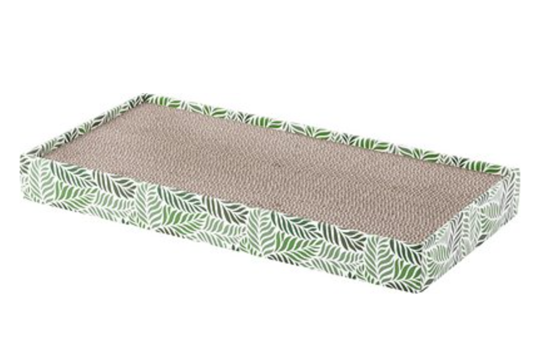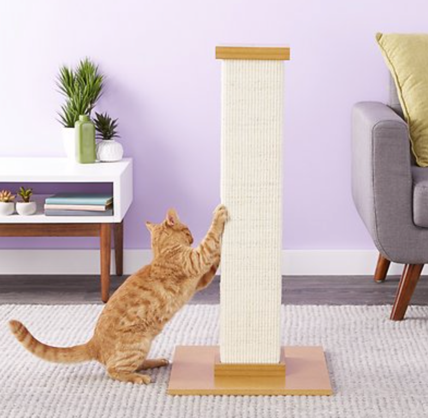Teaching Cats to Scratch Appropriately
1. Provide Appropriate Cat Scratchers:
-Cats need places to scratch which is why they will choose your furniture and other places to scratch if you don’t provide alternatives.
-You want to have a variety of scratchers; ones they can sit on and scratch, along with ones they can reach up and stretch and scratch. Cats enjoy reaching up high and extending their entire body while scratching like some wild cats would do on tree trunks.
Here is a Floor Scratcher – Click Picture to Purchase:
Here is a Scratching Post (We encourage you to get a very tall cat tree which would include a scratching post.) – Click Picture to Purchase:
2. Prevent Inappropriate Scratching:
-If cats are still scratching furniture, you can use packing tape or even double-sided tape on the areas they are scratching. They do not like the feeling of it and will avoid it.
-You can also try just covering that area with a blanket. Eventually they will learn and you can remove the tape and blankets.
3. Move Scratchers:
-If you notice your cat is scratching a particular area of the couch or furniture, move your scratchers close to that area.
4. Redirect and Reward:
-If you have moved the scratcher to a “problem area” and you catch your cat scratching the furniture and not the scratcher; simply, gently, and without reprimanding your cat, remove your cat from that problem area and place them on the appropriate scratcher. Reward them verbally or give them treats whether they begin scratching the appropriate scratcher or not. You are simply redirecting that behavior to the appropriate place and rewarding them. They will begin to pair that scratcher with things they love like treats, verbal praise, and pets.
5. Encourage Scratching:
-Use toys like a wand/string toy around the scratchers so they have to jump on them or near them. Cats will generally enjoy scratching when they are a bit riled up and feeling playful. They may even feel the scratcher under their paws and immediately begin scratching on their own.
-Encourage scratching by adding dry cat nip or even cat nip spray. You can also manually scratch the post with your fingers as cats like the sound. Never force their paws to scratch as that may deter them from using it.
-Remember to always reward appropriate or desired behavior and IGNORE undesired or inappropriate behavior. Simply redirect and reward!
NEVER DECLAW YOUR CATS!
Cats can easily learn to scratch appropriately when given the right tools and encouragement. Declawing cats is NEVER the answer. Declawing cats is cruel, inhumane, and extremely painful. It is not just removing the claws, it is actually the amputation of the first joint on each toe. It can cause them lifelong pain and result in severe behavior issues. Cats are “toe walkers” and declawing them is altering their natural physiology. Cats use their paws to communicate if they do not like something and if they cannot use their paws, they are more likely to bite. Many declawed cats resort to biting and other hugely problematic behaviors since they cannot use their paws to communicate. Using the litterbox can be painful: cats who are declawed are more likely to have litterbox issues i.e. going outside the box because it’s painful to scratch the litter.
Click to watch this video on why declawing is horrendous for cats:









